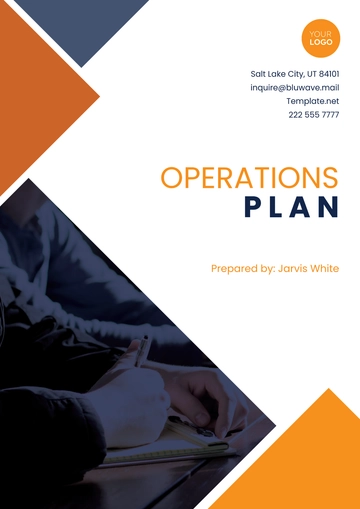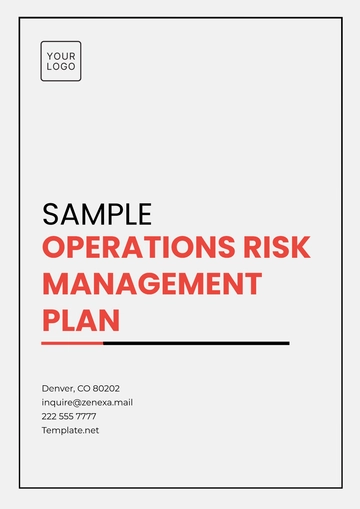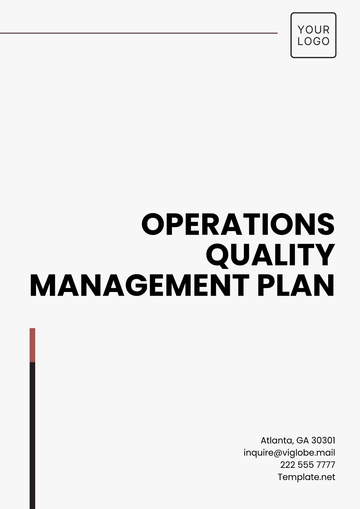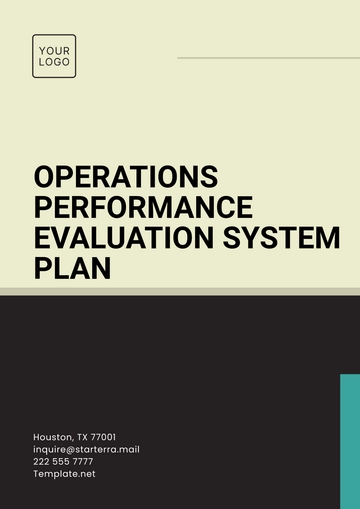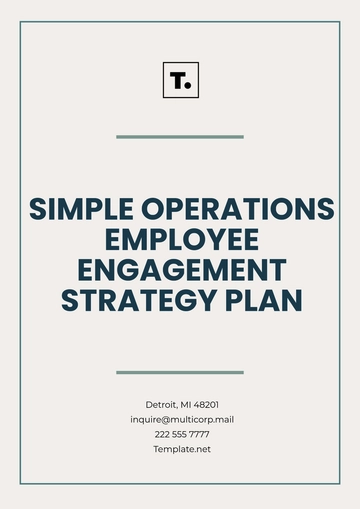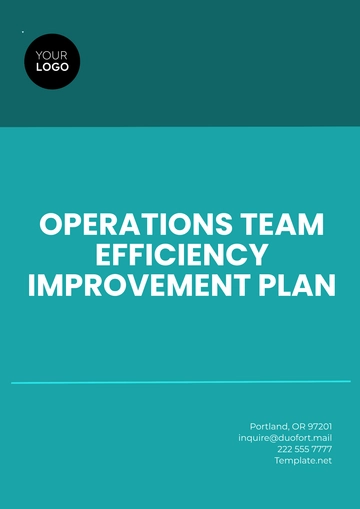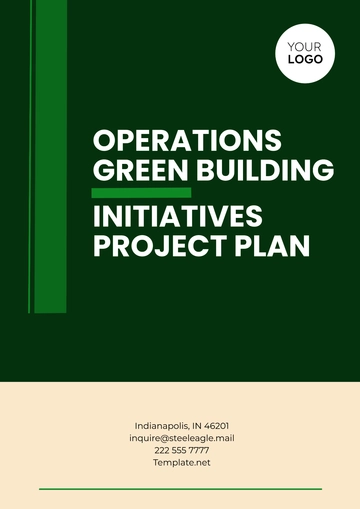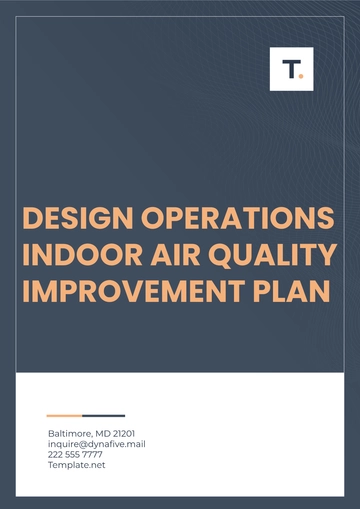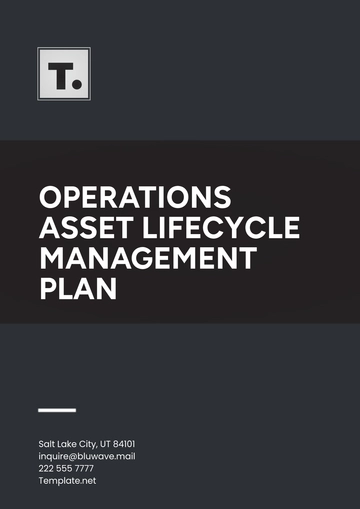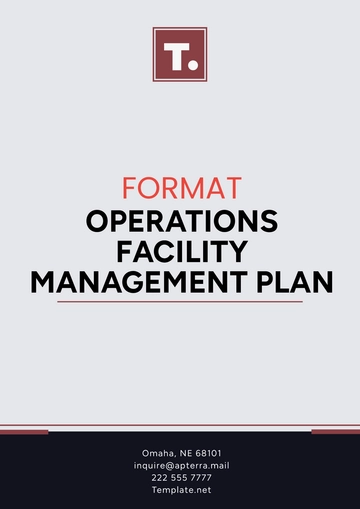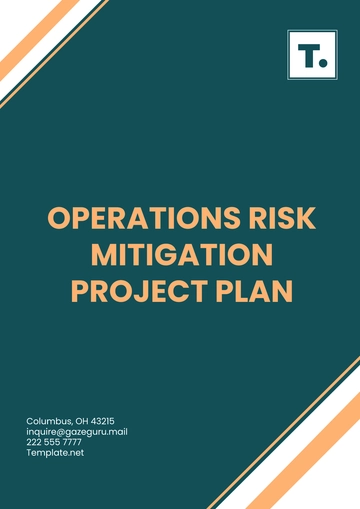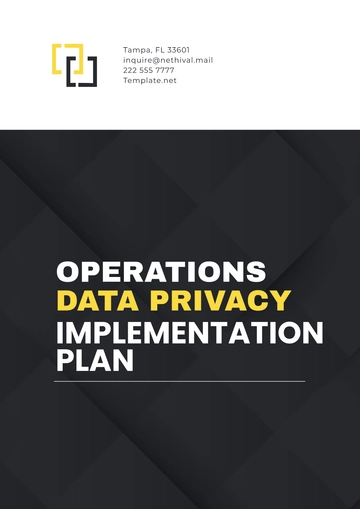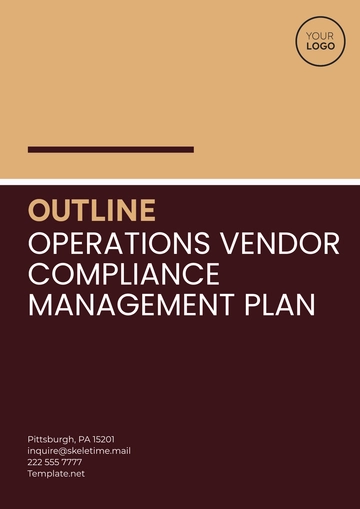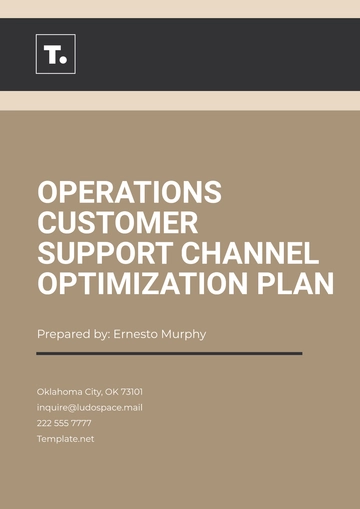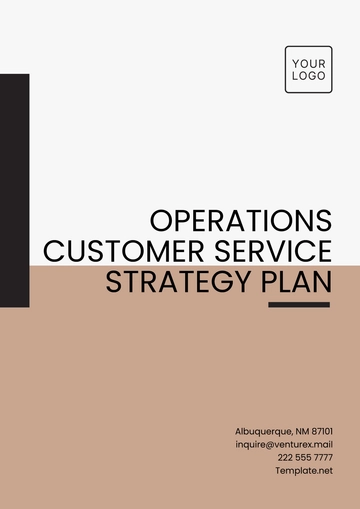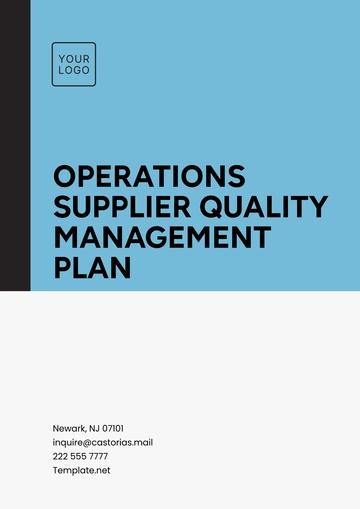Free Healthcare Operational Plan
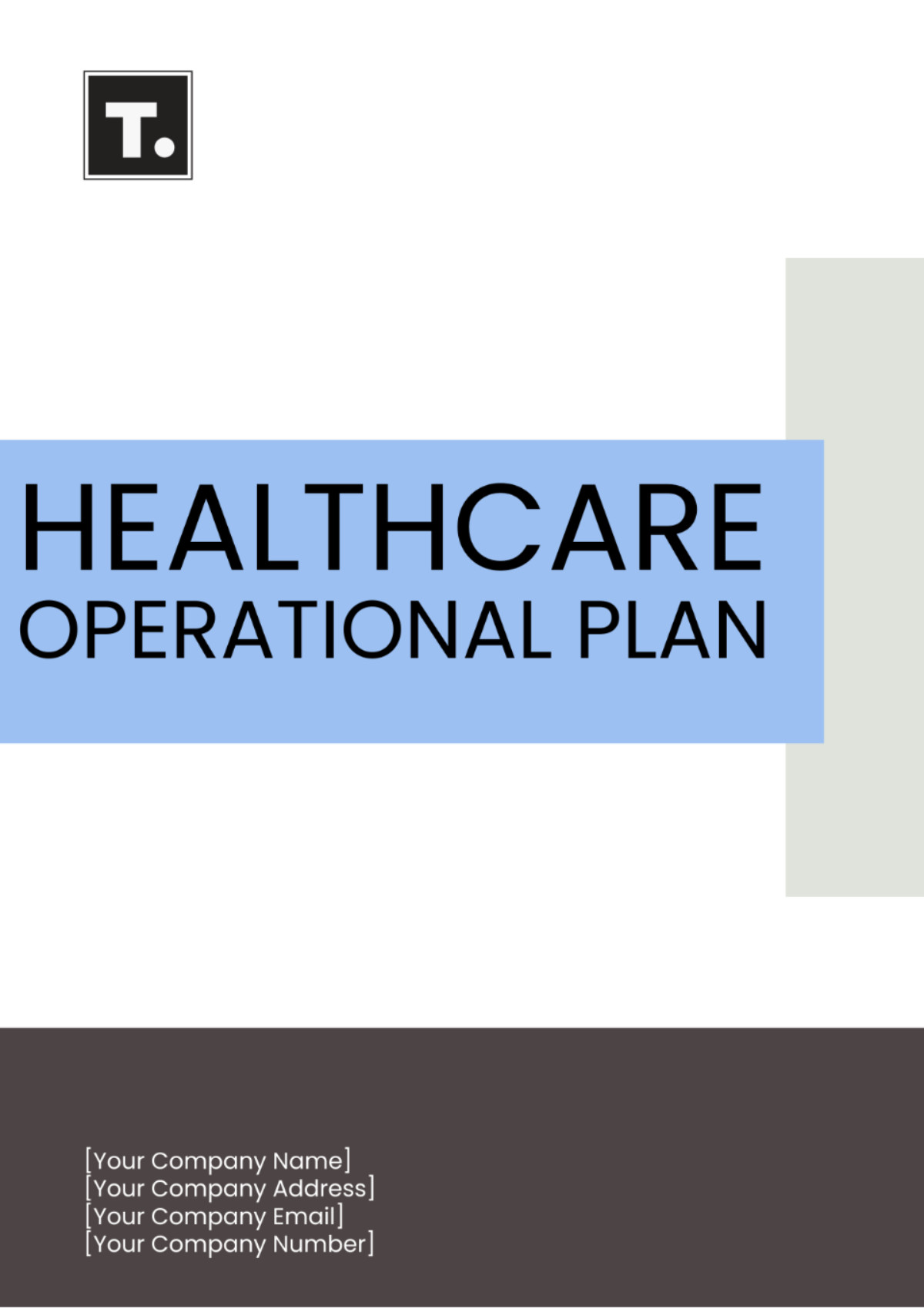
Prepared by | [Your Name] |
Date | [DATE] |
I. Executive Summary
This Healthcare Operational Plan by [Your Company Name] outlines the procedures for managing crises, including natural disasters, disease outbreaks, and mass casualty events. It aims to ensure preparedness, effective response, and swift recovery to maintain the highest possible level of healthcare service during emergencies.
II. Introduction
Healthcare facilities face various risks that can lead to significant disruptions. This plan provides a structured approach to crisis management, focusing on preparedness, response, and recovery. It serves as a comprehensive guide for healthcare administrators, staff, and stakeholders.
III. Objectives
Ensure patient and staff safety.
Maintain continuity of care during crises.
Efficiently allocate and manage resources.
Facilitate rapid recovery and return to normal operations.
Enhance communication and coordination among stakeholders.
IV. Crisis Management Team
A. Composition
Incident Commander: Overall authority during crises.
Medical Director: Oversees medical response.
Nursing Director: Manages nursing resources.
Logistics Coordinator: Handles supplies and logistics.
Communications Officer: Manages internal and external communications.
Security Chief: Ensures facility security.
Public Relations Officer: Liaises with media and the public.
B. Roles and Responsibilities
Incident Commander: Coordinates all aspects of the response.
Medical Director: Guides clinical decisions and care standards.
Nursing Director: Allocates nursing staff and manages patient care.
Logistics Coordinator: Ensures availability of medical supplies and equipment.
Communications Officer: Provides timely and accurate information.
Security Chief: Maintains order and safety within the facility.
Public Relations Officer: Manages public information and media relations.
V. Risk Assessment
A. Potential Risks
Natural Disasters: Earthquakes, floods, hurricanes, etc.
Disease Outbreaks: Influenza, COVID-19, etc.
Mass Casualties: Terrorist attacks, industrial accidents, etc.
B. Risk Analysis
Identify vulnerabilities within the facility.
Evaluate the probability and impact of various risks.
Develop mitigation strategies for high-risk scenarios.
VI. Response Procedures
A. Natural Disasters
Pre-Event Preparation:
Conduct regular drills.
Ensure the structural integrity of the facility.
Stockpile essential supplies.
Immediate Response:
Activate the Emergency Operations Center (EOC).
Evacuate if necessary.
Provide immediate medical care to affected individuals.
Post-Event Recovery:
Assess damage and begin repairs.
Resume normal operations as soon as feasible.
Provide mental health support to staff and patients.
B. Disease Outbreaks
Pre-Event Preparation:
Develop infection control protocols.
Train staff in disease-specific procedures.
Stockpile personal protective equipment (PPE) and medications.
Immediate Response:
Isolate infected patients.
Implement quarantine measures if necessary.
Provide treatment according to established guidelines.
Post-Event Recovery:
Conduct thorough decontamination.
Review and update infection control policies.
Support staff and patients in recovery and rehabilitation.
C. Mass Casualties
Pre-Event Preparation:
Establish triage protocols.
Train staff in mass casualty management.
Coordinate with local emergency services.
Immediate Response:
Activate the mass casualty response plan.
Implement triage to prioritize care.
Mobilize additional resources and personnel.
Post-Event Recovery:
Conduct debriefings and mental health support.
Evaluate the response and identify improvement areas.
Replenish supplies and review response strategies.
VII. Communication Plan
A. Internal Communication
Use intercoms, emails, and messaging apps for swift communication.
Ensure all staff are familiar with communication protocols.
B. External Communication
Regular updates to the public via media and social media.
Maintain communication with local health authorities and emergency services.
Establish a hotline for public inquiries.
VIII. Resource Management
A. Supply Chain Management
Identify critical supplies and maintain adequate stock levels.
Establish agreements with multiple suppliers.
B. Staffing
Develop a staffing plan for emergencies, including backup staff.
Provide cross-training to enhance staff flexibility.
C. Financial Resources
Allocate emergency funds.
Apply for grants and assistance from government and non-governmental organizations.
IX. Training and Drills
Conduct regular training sessions for all staff.
Organize drills simulating various crisis scenarios.
Evaluate drill performance and provide feedback for improvement.
Update training materials based on the latest guidelines and lessons learned.
X. Performance Metrics
To ensure the effectiveness of the Healthcare Operational Plan, the following performance metrics will be tracked and evaluated:
A. Preparedness Metrics
Training Completion Rate: Percentage of staff who have completed required training.
Drill Participation Rate: Percentage of staff who participate in regular drills.
Supply Stock Levels: Availability of critical supplies (e.g., PPE, medications).
B. Response Metrics
Response Time: Time taken to activate the Emergency Operations Center (EOC) after a crisis occurs.
Triage Efficiency: Time taken to triage and prioritize patients in mass casualty events.
Patient Throughput: Number of patients treated per hour during a crisis.
C. Communication Metrics
Information Dissemination Speed: Time taken to distribute critical information to staff and the public.
Communication Accuracy: Percentage of communications that are clear and error-free.
D. Recovery Metrics
Time to Resume Normal Operations: Duration required to restore normal healthcare services after a crisis.
Resource Replenishment Time: Time taken to restock critical supplies post-crisis.
Staff and Patient Well-being: Levels of staff and patient satisfaction and well-being post-crisis (measured through surveys).
E. Improvement Metrics
After-Action Review Completion Rate: Percentage of incidents that undergo a formal after-action review.
Implementation of Improvement Recommendations: Percentage of recommended improvements implemented within a specified timeframe.
XI. Evaluation and Improvement
After-action reviews following each incident.
Collect feedback from staff and stakeholders.
Regularly update the operational plan based on new insights and changes in the external environment.
Implement corrective actions and improvements promptly.
XII. Conclusion
This Healthcare Operational Plan is a living document that will evolve with changing circumstances and emerging threats. By adhering to the outlined procedures, our facility will be better prepared to handle crises efficiently, ensuring the safety and well-being of patients and staff.
- 100% Customizable, free editor
- Access 1 Million+ Templates, photo’s & graphics
- Download or share as a template
- Click and replace photos, graphics, text, backgrounds
- Resize, crop, AI write & more
- Access advanced editor
Discover the ultimate solution for streamlining healthcare operations with the Healthcare Operational Plan Template from Template.net. Crafted with precision, this editable and customizable template empowers you to tailor your operational strategies seamlessly. Accessible and editable in our Ai Editor Tool, it ensures efficiency and adaptability in managing healthcare processes. Transform your operations effortlessly with this indispensable resource.
You may also like
- Finance Plan
- Construction Plan
- Sales Plan
- Development Plan
- Career Plan
- Budget Plan
- HR Plan
- Education Plan
- Transition Plan
- Work Plan
- Training Plan
- Communication Plan
- Operation Plan
- Health And Safety Plan
- Strategy Plan
- Professional Development Plan
- Advertising Plan
- Risk Management Plan
- Restaurant Plan
- School Plan
- Nursing Home Patient Care Plan
- Nursing Care Plan
- Plan Event
- Startup Plan
- Social Media Plan
- Staffing Plan
- Annual Plan
- Content Plan
- Payment Plan
- Implementation Plan
- Hotel Plan
- Workout Plan
- Accounting Plan
- Campaign Plan
- Essay Plan
- 30 60 90 Day Plan
- Research Plan
- Recruitment Plan
- 90 Day Plan
- Quarterly Plan
- Emergency Plan
- 5 Year Plan
- Gym Plan
- Personal Plan
- IT and Software Plan
- Treatment Plan
- Real Estate Plan
- Law Firm Plan
- Healthcare Plan
- Improvement Plan
- Media Plan
- 5 Year Business Plan
- Learning Plan
- Marketing Campaign Plan
- Travel Agency Plan
- Cleaning Services Plan
- Interior Design Plan
- Performance Plan
- PR Plan
- Birth Plan
- Life Plan
- SEO Plan
- Disaster Recovery Plan
- Continuity Plan
- Launch Plan
- Legal Plan
- Behavior Plan
- Performance Improvement Plan
- Salon Plan
- Security Plan
- Security Management Plan
- Employee Development Plan
- Quality Plan
- Service Improvement Plan
- Growth Plan
- Incident Response Plan
- Basketball Plan
- Emergency Action Plan
- Product Launch Plan
- Spa Plan
- Employee Training Plan
- Data Analysis Plan
- Employee Action Plan
- Territory Plan
- Audit Plan
- Classroom Plan
- Activity Plan
- Parenting Plan
- Care Plan
- Project Execution Plan
- Exercise Plan
- Internship Plan
- Software Development Plan
- Continuous Improvement Plan
- Leave Plan
- 90 Day Sales Plan
- Advertising Agency Plan
- Employee Transition Plan
- Smart Action Plan
- Workplace Safety Plan
- Behavior Change Plan
- Contingency Plan
- Continuity of Operations Plan
- Health Plan
- Quality Control Plan
- Self Plan
- Sports Development Plan
- Change Management Plan
- Ecommerce Plan
- Personal Financial Plan
- Process Improvement Plan
- 30-60-90 Day Sales Plan
- Crisis Management Plan
- Engagement Plan
- Execution Plan
- Pandemic Plan
- Quality Assurance Plan
- Service Continuity Plan
- Agile Project Plan
- Fundraising Plan
- Job Transition Plan
- Asset Maintenance Plan
- Maintenance Plan
- Software Test Plan
- Staff Training and Development Plan
- 3 Year Plan
- Brand Activation Plan
- Release Plan
- Resource Plan
- Risk Mitigation Plan
- Teacher Plan
- 30 60 90 Day Plan for New Manager
- Food Safety Plan
- Food Truck Plan
- Hiring Plan
- Quality Management Plan
- Wellness Plan
- Behavior Intervention Plan
- Bonus Plan
- Investment Plan
- Maternity Leave Plan
- Pandemic Response Plan
- Succession Planning
- Coaching Plan
- Configuration Management Plan
- Remote Work Plan
- Self Care Plan
- Teaching Plan
- 100-Day Plan
- HACCP Plan
- Student Plan
- Sustainability Plan
- 30 60 90 Day Plan for Interview
- Access Plan
- Site Specific Safety Plan
